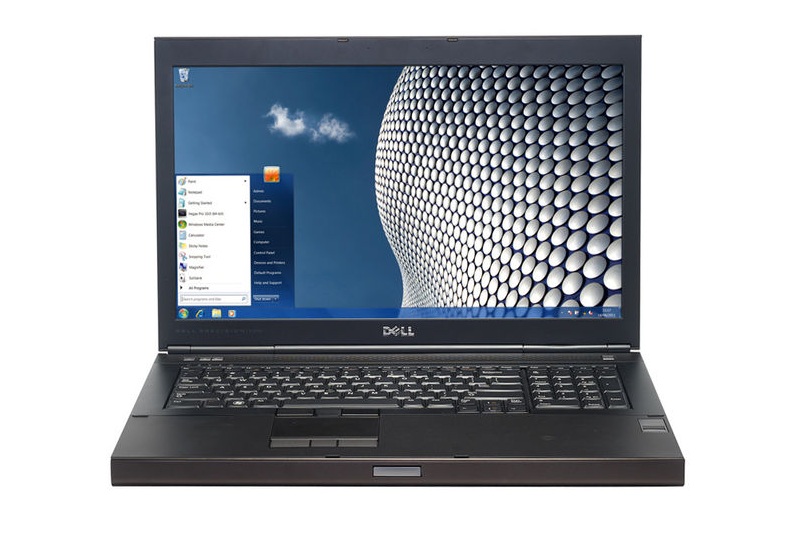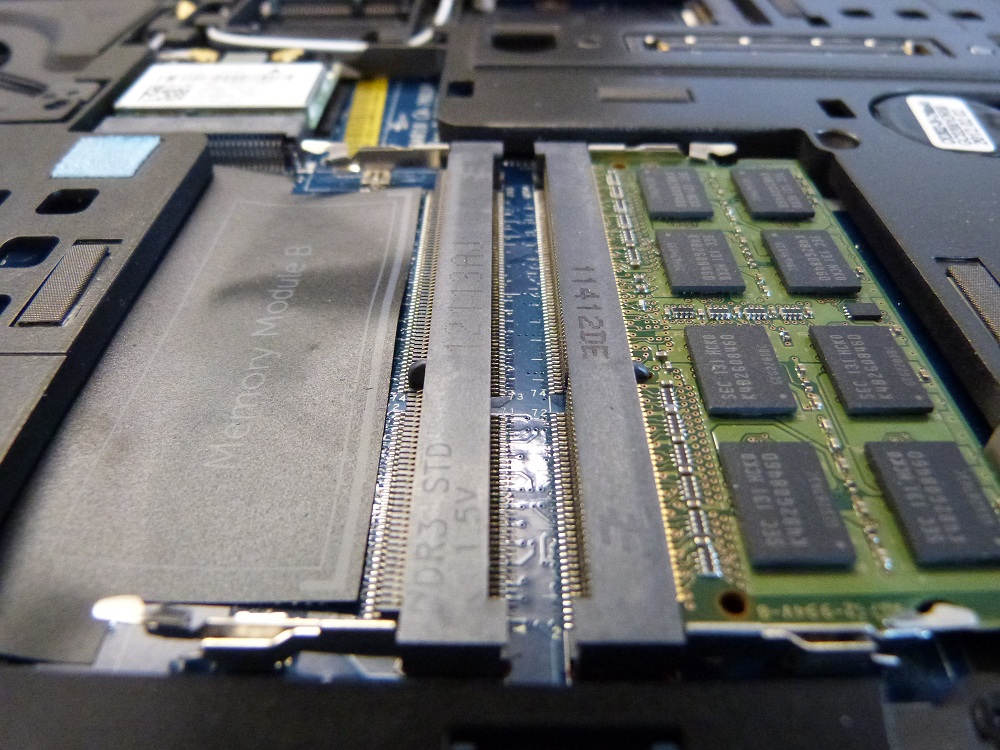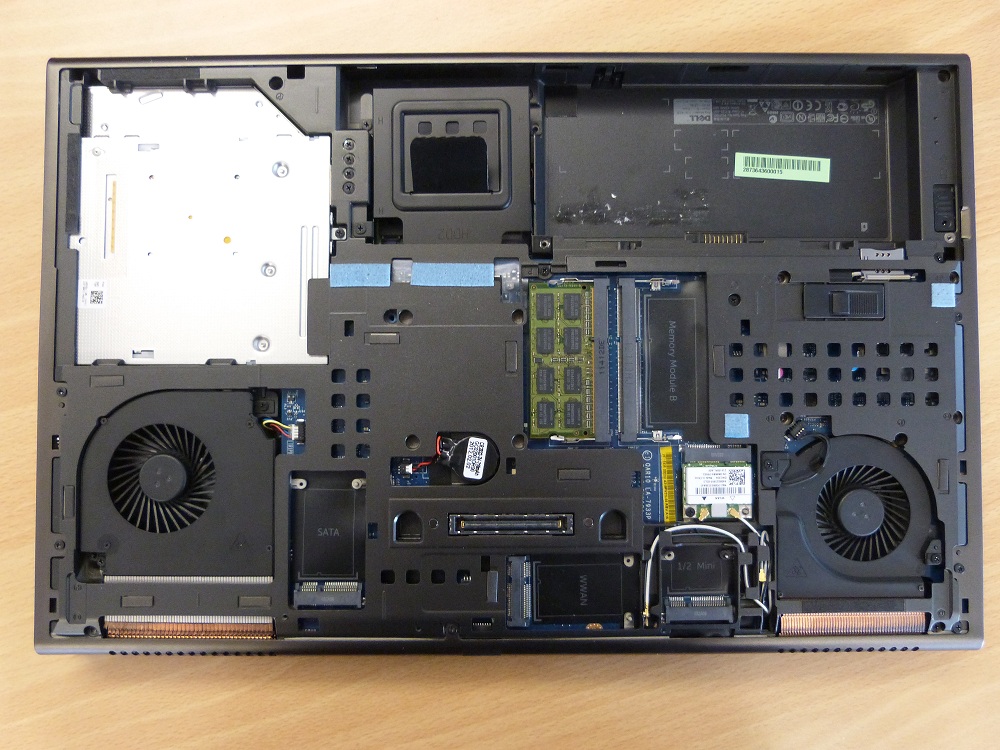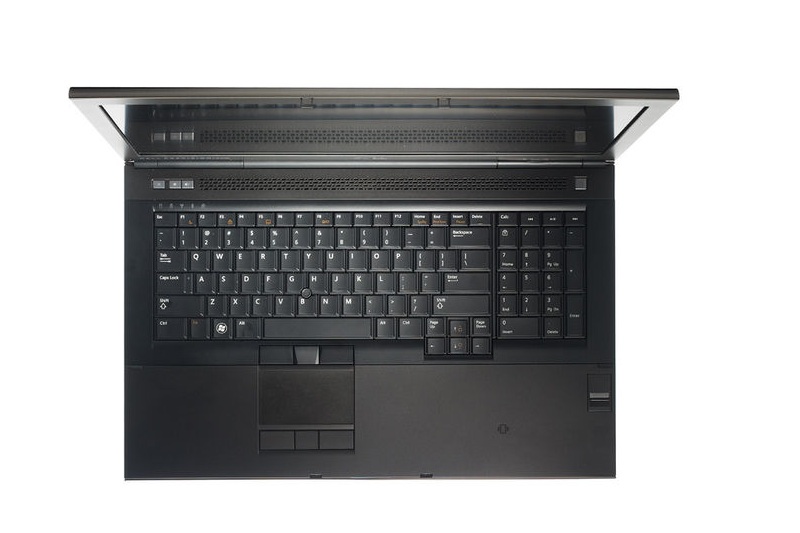Dell Precision M6700 review
This 17in workstation features an robust design, plenty of ports and can be configured to suit your business needs.
Dell’s 17in workstation doesn’t come cheap, especially if you improve its specification with the wealth of upgrades available. However, it’s a price worth paying for those who need desktop-style power in a machine that can be slung onto the back seat of a car. The M6700 has few weaknesses: stellar build quality, more versatility than most desktops, good performance and a screen which is only really beaten by Apple. The MacBook Pro is tempting thanks to its screen quality and power, but the Precision’s versatility, features and upgrade options mean this should be the choice for anyone looking to do serious work.


Dell Precision - Front

Dell Precision - Memory

Dell Precision - Inside

Dell Precision - Keyboard
Dell is strong in the workstation market - its 17in M6000-series set the standard in 2010, and the updated M6700 is another strong proposition.
Our sample was a pre-production model, but build quality was excellent and the final device will ship with the same components. On the outside, it doesn't look like much has changed. The M6700 still boasts the utilitarian design of its predecessor: a gunmetal grey chassis, few concessions to style, and build quality beyond reproach. There's barely any give in the wrist-rest or the base and there's only a little bend in the 17in lid - although no distortion on the display itself.

The Precision M6700 is a bulky device, but comes packed with connectivity including 4 x USB 3 ports
It's not a light or svelte laptop, mind. The M6700 weighs in at 3.7kg, with its power brick adding another kilogram. It's also 34mm thick and stretches 418mm from one side to the other.
Intelligent by design
Get closer to the M6700 and you'll begin to recognise sensible touches typical of Precision machines. There's a ThinkPad-style trackpoint in the middle of the keyboard, with a second set of buttons just below.
The port selection is generous, too: modern inclusions, such as four USB 3 socks and a DisplayPort output, are joined by FireWire, ExpressCard slots and eSATA. There's also HDMI and D-SUB outputs, an SD card reader and a selection of status lights crammed in too.
Dell has got the ergonomics right. The trackpad and trackpoint are both responsive, even if the latter isn't quite as comfortable as Lenovo's efforts, and we also like the keyboard: it's not got the light and clicky feel of the average ThinkPad, but the base is solid and it's matched with a comfortable, marginally softer action. The layout is generally to our likely, with the single-height Return key our only minor qualm.
The 17in screen is good, too, even if its 1,920 x 1,080 native resolution feels small now the Retina Display versions of Apple's MacBook Pro has been released.
Quality is reasonable: the matte finish helps under office lights, and we recorded brightness and contrast ratio measurements of 252cd/m2 and 523:1 - fine scores which are second to Apple's Retina-toting MacBook Pro (333cd/m2 and 1,023:1). The average Delta E of 5.5 is a good score and confirms the good colour accuracy - ideal if you're doing colour-sensitive work such as graphic design. Again it's behind the MacBook, which served up a stunning Delta E of 1.4. Despite being trumped on all fronts by the MacBook Pro, there is no denying the Dell has a decent screen.
Get the ITPro daily newsletter
Sign up today and you will receive a free copy of our Future Focus 2025 report - the leading guidance on AI, cybersecurity and other IT challenges as per 700+ senior executives
Mike Jennings has worked as a technology journalist for more than a decade and has been fascinated by computers since childhood, when he spent far too long building terrible websites. He loves desktop PCs, components, laptops and anything to do with the latest hardware.
Mike worked as a staff writer at PC Pro magazine in London for seven years, and during that time wrote for a variety of other tech titles, including Custom PC, Micro Mart and Computer Shopper. Since 2013, he’s been a freelance tech writer, and writes regularly for titles like Wired, TechRadar, Stuff, TechSpot, IT Pro, TrustedReviews and TechAdvisor. He still loves tech and covers everything from the latest business hardware and software to high-end gaming gear, and you’ll find him on plenty of sites writing reviews, features and guides on a vast range of topics.
You can email Mike at mike@mike-jennings.net, or find him on Twitter at @mikejjennings
-
 Westcon-Comstor and Vectra AI launch brace of new channel initiatives
Westcon-Comstor and Vectra AI launch brace of new channel initiativesNews Westcon-Comstor and Vectra AI have announced the launch of two new channel growth initiatives focused on the managed security service provider (MSSP) space and AWS Marketplace.
By Daniel Todd Published
-
 Third time lucky? Microsoft finally begins roll-out of controversial Recall feature
Third time lucky? Microsoft finally begins roll-out of controversial Recall featureNews The Windows Recall feature has been plagued by setbacks and backlash from security professionals
By Emma Woollacott Published
-
 The UK government wants quantum technology out of the lab and in the hands of enterprises
The UK government wants quantum technology out of the lab and in the hands of enterprisesNews The UK government has unveiled plans to invest £121 million in quantum computing projects in an effort to drive real-world applications and adoption rates.
By Emma Woollacott Published